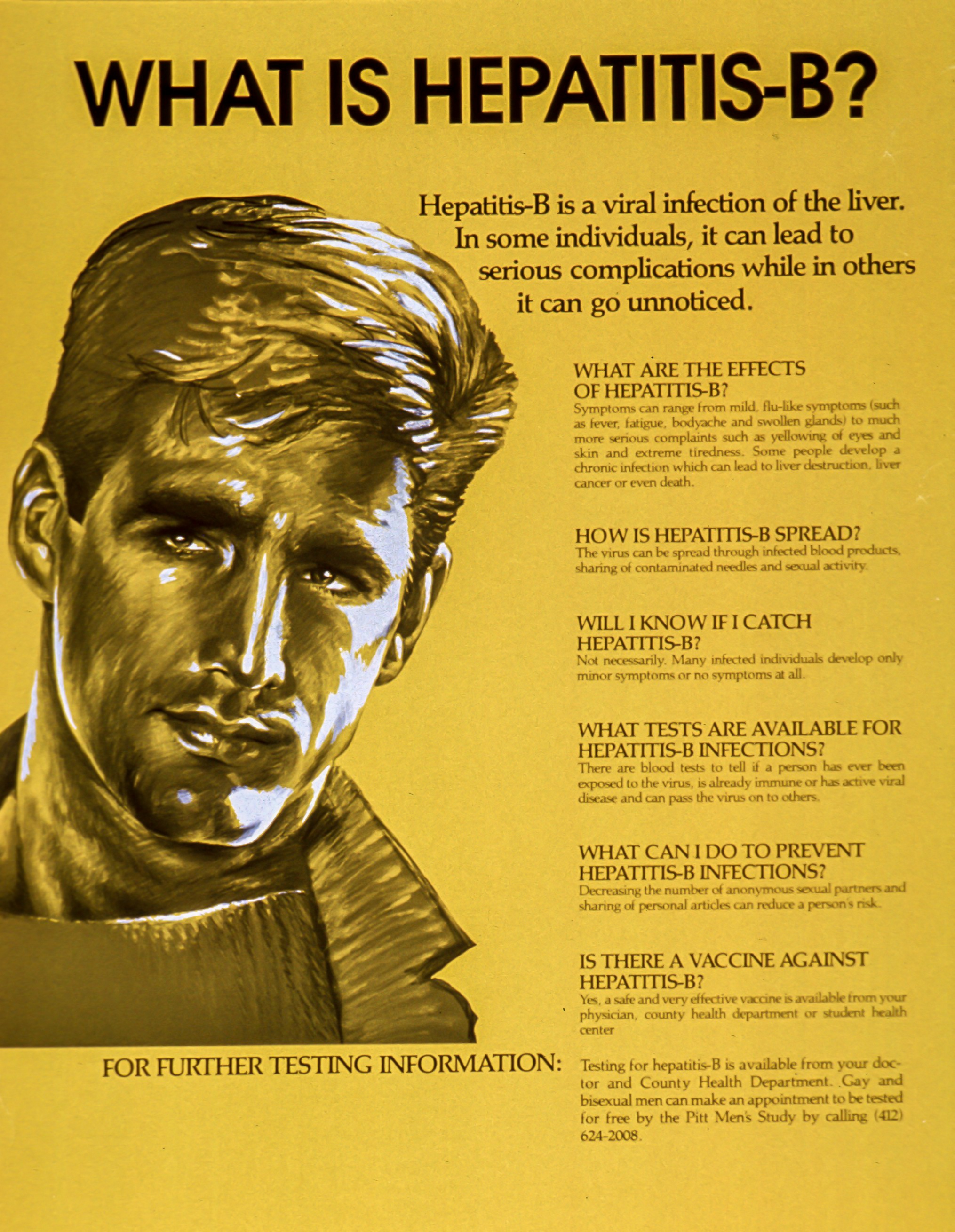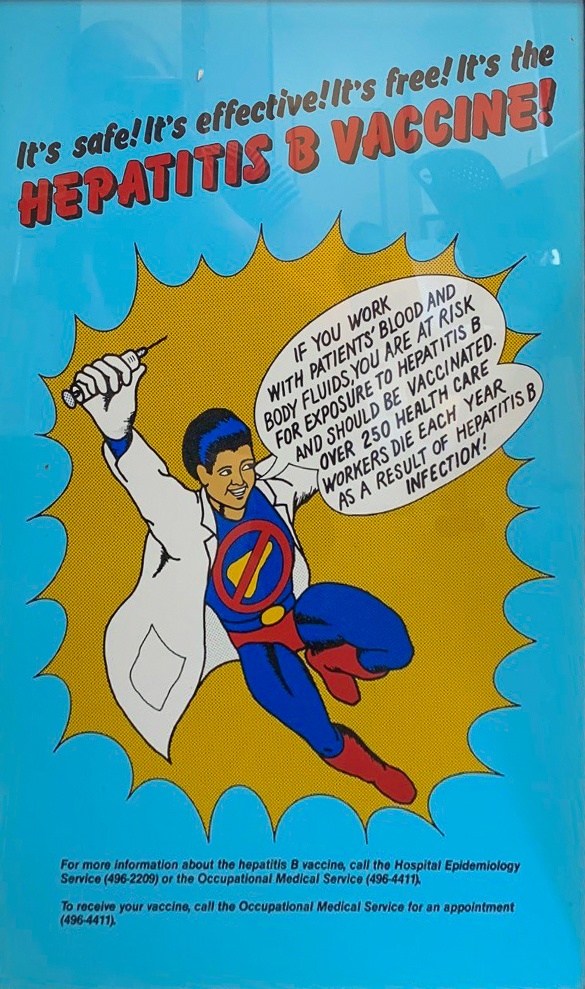Hepatitis
Human hepatitis has been recognized since the dawn of recorded history, but proof of infectious cause and delineation of hepatitis A (infectious hepatitis) from hepatitis B (serum hepatitis) were not established until the first half of the 20th century. Development of the present killed hepatitis A vaccine depended on a series of breakthrough discoveries made during the last half of the 20th century. These were marmoset propagation (1967); definition of virus attributes (1974-1975); development of diagnostic tests and seroepidemiology (1974-1975); and the preparation and proof of efficacy of a prototype killed hepatitis A vaccine (1976). Successful cultivation of hepatitis A virus in cell culture in 1979 quickly led to development of both live and killed hepatitis A vaccines for tests in humans (1980-1990). The year 1991 marks the initiation of protective efficacy trials of two different killed virus vaccines in human beings. The safety and protective efficacy of the first hepatitis A vaccine (manufactured by Merck) was reported on in an article by Maurice Hilleman in 1993.
Hepatitis A, hepatitis B, and hepatitis C are liver infections caused by three different viruses. Although each can cause similar symptoms, they are spread in different ways and can affect the liver differently. Hepatitis A is usually a short-term infection and does not become chronic. Hepatitis B and hepatitis C can also begin as short-term, acute infections, but in some people, the virus remains in the body, resulting in chronic disease and long-term liver problems. There are vaccines to prevent hepatitis A and hepatitis B; however, there is no vaccine for hepatitis C.
Hepatitis B Vaccine Poster NIH Office of History & Stetten Museum
The first reported case of hepatitis after a blood transfusion was in 1938 by Junet and Junet. This became a big issue during WWII when they pooled plasma: one infected donor would affect everyone.
By 1947, scientists knew the causes were hepatitis virus A and B. In the 1950s they tried to use liver function tests on donors, but they fell in disfavor. Dr. Roderick Murray was involved in hepatitis research in the early days of the NIH Division of Biologics Standards (DBS).
In 1954 the Perlmutter vs. Beth David Hospital case went to court, where a patient sued the hospital where they had been treated for contracting hepatitis after a blood transfusion. The Court of Appeals ruled that the warranties of fitness and merchantability did not apply because the provision of blood by the hospital to the patient was not a sale but part of the patient-hospital contract for services. Blood banks found refuge in early court cases like this one.
In 1964 Grady and Chalmers published an article that blood from volunteer donors carried a lower risk of hepatitis than blood from paid donors. These results were not universally accepted among blood banks. Korzekwa, Jordan, and Alsever published a paper that challenged this and said it was based on socio-economic factors, not payment vs. volunteer donation.
In Kansas City, Missouri medical practitioners decided to boycott blood from the city’s two commercial blood banks. The blood banks sought redress from the Federal Trade Commission (FTC). In 1962, the FTC issued a complaint charging conspiracy to boycott in violation of the FTC Act. In 1964, the hearing came out in favor of the commercial blood banks.
Senate anti-trust hearings were held in 1964 and 1967. The 1964 bill stated that any blood bank, hospital, or physician may refuse or join together with others to refuse blood or plasma from any blood bank. The bill was reintroduced in 1967 with the addition “nor shall their interstate shipment be deemed to constitute trade or commerce in commodities.” In 1968, the civil courts overturned the FTC decision, and no further action was taken on antitrust legislation by Congress.
People had strong feelings about the exemption from existing antitrust provisions. Some thought it was the same as legislating monopolies, some thought it was permitting free choice. At first the Red Cross was in support of the bill, but three years later they opposed its passage on the basis that Red Cross opponents might block the establishment of new regional centers or abandon existing ones. The American Association of Blood Banks (AABB) and most community blood banks favored the law, but commercial blood banks were strongly opposed.
Meanwhile, in 1965, Dr. Baruch Blumberg discovered the hepatitis B virus, winning the Nobel Prize for his discovery. Originally the virus was called the “Australia Antigen” because it was named for an Australian aborigine's blood sample that reacted with an antibody in the serum of an American hemophilia patient. Working with Dr. Blumberg, microbiologist Irving Millman helped to develop a blood test for the hepatitis B virus.
Larger implications of the Kansas City case included that blood was characterized as a commodity in interstate commerce. If that’s true, then blood would be subject to the Uniform Sales Act and the Universal Commercial Code. The Uniform Sales Act and Universal Commercial Code is a comprehensive set of laws governing all commercial transactions in the United States. It helps to increase uniformity in transactions across state lines.
In 1967 Tibor J. Greenwalt took over responsibility for the American Red Cross; he was well known for his research and organizational skills.
In 1976 the Cunningham vs. McNeal Memorial Hospital case went to court. The court found that blood is a “product” and it had been “sold” that the blood was in defective state. The Illinois legislature eventually nullified this claim by determining that strict liability in tort may not be used as a cause of action in transfusion cases. Only negligence claims are considered to offer any resolution of such cases in favor of plaintiffs. No claim (as of 1981) had been filed on the theory that blood is subject to the Uniform Sales Act because it is regulated as a salable product under the biologics provision of the Public Health Services Act.
1955–1971 was a period of internal strife between blood suppliers and blood users. Dispute between the American Association of Blood Banks (AABB) and Red Cross over replacement policies that left the Red Cross always in debt to an attrition account, a blood debt occasioned by the two for one replacement practices of some hospitals, in the face of the Red Cross policy to replace on a one for one basis.
The year 1971 was a watershed moment: large public frustration that hepatitis was an avoidable sequel to blood transfusion. On November 5, 1971, the NIH Division of Biologics Standards (DBS) acted hastily to publish a requirement that that all blood subject to licensure must be tested for hepatitis B surface antigen. This requirement went into effect on July 1, 1972, the same day that the DBS was transferred administratively from the NIH to the Food and Drug Administration (FDA). Beginning December 18, 1975, tests of third generation sensitivity for hepatitis B were required for all registered blood establishments.
The hepatitis program was living in the DBS Laboratory of Virology (called the Division of Virology under FDA) with Dr. Lewellys F. Barker until the summer of 1973. In June 1973, with the recognition of the interrelation between the hepatitis program and needed regulatory reform in blood banking, Dr. Barker was called upon to combine these two elements into a cohesive whole under the Blood and Blood Products Division. Going forward, hepatitis research would be integrated into the FDA blood bank regulatory and research effort, as the government’s role in developing a national blood policy was taking off.
Vaccines
Four years after discovering the hepatitis B virus, Drs. Blumberg and Millman developed the first hepatitis B vaccine, which was initially a heat-treated form of the virus. In 1981, the FDA approved a more sophisticated plasma-derived hepatitis B vaccine for human use. This “inactivated” type of vaccine involved the collection of blood from hepatitis B virus-infected (HBsAg-positive) donors. The pooled blood was subjected to multiple steps to inactive the viral particles that included formaldehyde and heat treatment (or “pasteurization”). Merck Pharmaceuticals manufactured this plasma vaccine as "Heptavax," which was the first commercial hepatitis B virus vaccine. The use of this vaccine was discontinued in 1990 and it is no longer available in the U.S.
In 1986, research resulted in a second generation of genetically engineered (or DNA recombinant) hepatitis B vaccines. These new approved vaccines are synthetically prepared and do not contain blood products - it is impossible to get hepatitis B from the new recombinant vaccines that are currently approved in the United States.
Several vaccines for hepatitis A are available in the United States, including several combination vaccines. It has been part of the routine childhood immunization schedule since 1994. Hepatitis vaccination is recommended at age 1, with a booster shot several months later. The vaccine contains no live virus and is safe even for people with reduced immune function.
There is currently no vaccine for hepatitis C.
Poster from a Hepatitis B Study at the University of Pittsburgh in the 1980s (National Library of Medicine)



